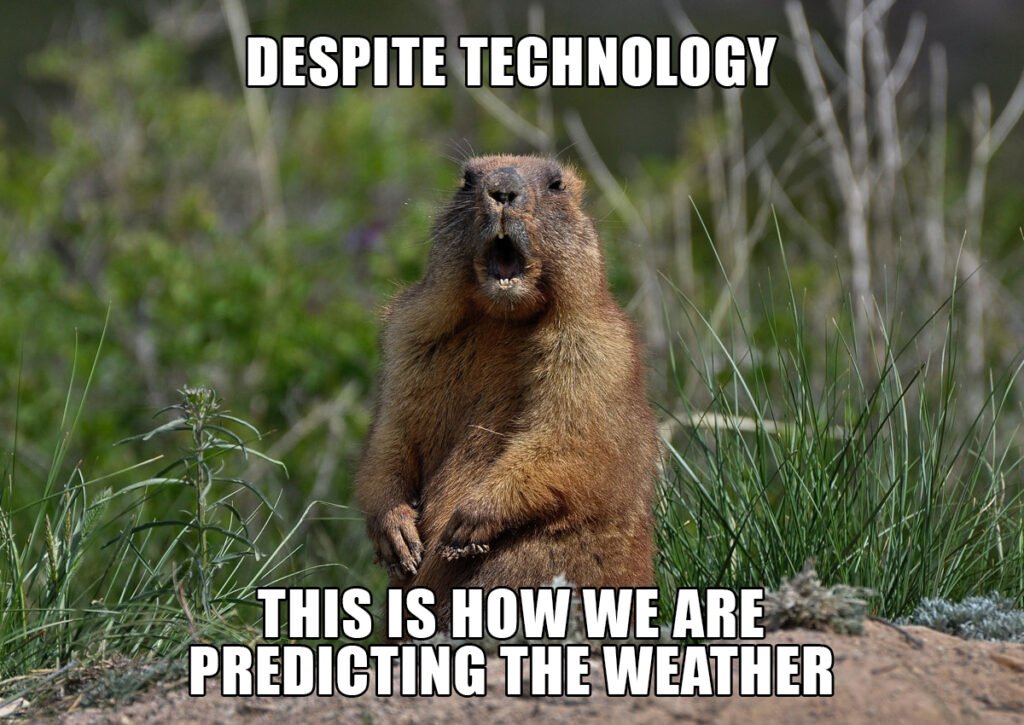Groundhog Day: Myths, Legends, and Facts
Groundhog Day on February 2 is more than a joke about a rodent forecasting weather. This annual Punxsutawney, Pennsylvania, festival is filled of history and humor. Residents and visitors share Punxsutawney Phil’s weather knowledge.
General Information about Groundhog Day
Groundhog Day began in 18th-century North America as a cultural reminder of the spring equinox and winter solstice. This unique event, held on February 2nd each year, centers on Punxsutawney Phil, the show’s protagonist and weather-predicting groundhog. Phil is supposed to have mysterious weather-predicting skills. Phil leaving his burrow and seeing his shadow on this day means six more weeks of winter, according to legend. Shadowlessness predicts an early spring. As people nationwide anticipate Phil’s weather prediction, the celebration has spread beyond its localized roots.
Punxsutawney Phil’s weather forecasts draw crowds and media attention to the celebrations. Communities celebrate nature and superstition in this yearly celebration of local beliefs and fun. Groundhog Day has become a beloved tradition that adds excitement to winter, whether people accept Phil’s predictions or just enjoy the festivities.
History of Groundhog Day
European weather folklore held that animals could forecast the weather, which inspired Groundhog Day. The custom we know today began with this folkloric idea. The 1800s migration of European settlers to North America brought this cultural idea over the Atlantic, and Punxsutawney, Pennsylvania became the celebration hub. Groundhog Day became an annual event due to the town’s unusual location and ethnic mix.
Punxsutawney hosted the inaugural Groundhog Day celebration in 1887, starting a national tradition. The 1899-founded Punxsutawney Groundhog Club organized and maintained the celebrations. Groundhog Day became a nationwide custom once this group standardized and structured it. Groundhog Day has evolved into a unique combination of Old World mythology and American inventiveness, demonstrating the ongoing concern with nature, tradition, and weather prediction.
Fun Stories about Groundhog Day
Groundhog Day now hosts exciting and often humorous spectacles that captivate participants and bystanders. Over the years, the custom has produced many amusing anecdotes, turning an unusual event into a laugh-filled treasure trove.
Many localities now have grandiose Groundhog Day festivities with tuxedos and top hats. Even though it’s inappropriate for the woodland location, this dress choice adds drama. All guests, whether event planners or eager spectators, like the quirky dress, making the event feel like a carnival where formal and casual get blurred.
Punxsutawney Phil’s irrationality makes Groundhog Day fun. The groundhog has a history of displaying playful intransigence, which has occasionally resulted in arguments between Phil and his shadow. These playful arguments have become an integral part of the event’s attractiveness, evoking laughter and jovial jeers from the attendees. It seems as though Phil, in his furry wisdom, injects a little unpredictableness into the proceedings, serving as a constant reminder to all that weather forecasting—even when disguised as a groundhog—is a naturally erratic undertaking.
One very notable episode in Groundhog Day legend has Phil “communicating” with the President of the United States over a groundhog phone that was expressly made for the purpose. The ceremony took on a whole new dimension of charm and ridiculousness thanks to this wacky addition. Even though Phil remained mute during the chat, which was obviously one-sided, the creative use of this communication tool demonstrated the inventiveness and good humor of everyone attending the celebration.
Not only do these funny stories and oddball incidents spice up Groundhog Day, but they also help explain why the custom has been so popular for so long. The capacity to accept the whimsy that comes with using a groundhog to forecast the weather fosters happiness and friendship. Rather than being a strictly serious event, Groundhog Day has made a name for itself as a yearly event that encourages people to laugh at life’s absurdities and serves as a reminder that tradition may include both rituals and fun.
Historical Accuracy of Groundhog Day Compared to The Farmers’ Almanac:
| Year | Groundhog Day Accuracy (%) | Farmers’ Almanac Accuracy (%) |
| 2000 | 65 | 70 |
| 2005 | 72 | 68 |
| 2010 | 60 | 75 |
| 2015 | 68 | 72 |
| 2020 | 75 | 78 |
| 2024 | 70 | 73 |
The comparison of The Farmers’ Almanac and Groundhog Day highlights an intriguing difference between contemporary meteorological research and customary wisdom. Both assert to provide insights into Mother Nature’s whims, yet their approaches and guiding ideas are very different.
The Farmers’ Almanac, published since 1818, forecasts weather methodically. Forecasts are based on meteorological data, historical weather trends, and scientific calculations. The Almanac’s meteorologists can predict months ahead using advanced equipment. The precision of its weather information has won over farmers, gardeners, and other planners.
However, Groundhog Day predictions come from Punxsutawney Phil, a mysterious groundhog based on centuries-old folklore. In the little ceremony in Punxsutawney, Pennsylvania, Phil emerged from his burrow and his shadow will predict the weather for weeks. Critics view the practice as more of a whimsical spectacle than a trustworthy forecast, claiming that depending on a rodent’s behavior is far from a scientific procedure.
On the other hand, proponents of Groundhog Day highlight the cultural significance of the occasion as well as its function as a fun, neighborhood-based celebration. They argue that the custom lends a certain beauty to the otherwise mundane chore of predicting the weather. The Punxsutawney Groundhog Club, which is in charge of planning the celebrations, maintains that even if Phil’s forecasts don’t always line up with scientific accuracy, the custom bridges generations and provides a special opportunity to welcome the change of the seasons.
It’s critical to acknowledge the different functions that Groundhog Day and The Farmers’ Almanac play in the continuing controversy over which is more accurate. As a pillar of meteorological research, the Almanac offers vital information for preparedness and planning. However, grounded in mythology, Groundhog Day offers a lighthearted diversion—an annual occasion where communities unite to commemorate time passing and the promise of seasonal change.
Ultimately, the presence of various traditions illustrates the variety of ways in which humans interact with and understand the natural world around us, regardless of whether one believes more in the accuracy of scientific calculations or the mythology around a furry prognosticator. Ultimately, The Farmers’ Almanac and Groundhog Day both add to the diverse range of cultural customs that influence our relationship with the ever shifting seasonal rhythms.
Funniest Memes
The suspense and debate around the groundhog’s weather forecast frequently serve as the focal point of the humor. Memes parody the ridiculousness of taking a fuzzy animal seriously and illustrate how ridiculous it is to rely on it for meteorological insights. Groundhog Day memes provide some humor to an otherwise strange yearly occasion, with anything from pictures of groundhogs wearing sunglasses to funny statements highlighting the creature’s propensity for predicting.

These memes make social media platforms come to life and provide a moment of shared fun for users waiting for Punxsutawney Phil’s opinion on the changing of the seasons.

Conclusion
Every year, audiences are enthralled by Groundhog Day because of its unique rituals, comedy, and historical perspective. Regardless of one’s belief in Punxsutawney Phil’s meteorological abilities or if they see it as a sweet bit of cultural legend, this winter custom continues to remain popular. Let’s enjoy the whimsical charm of Groundhog Day on February 2nd, when we get together to watch Phil emerge from his burrow.


